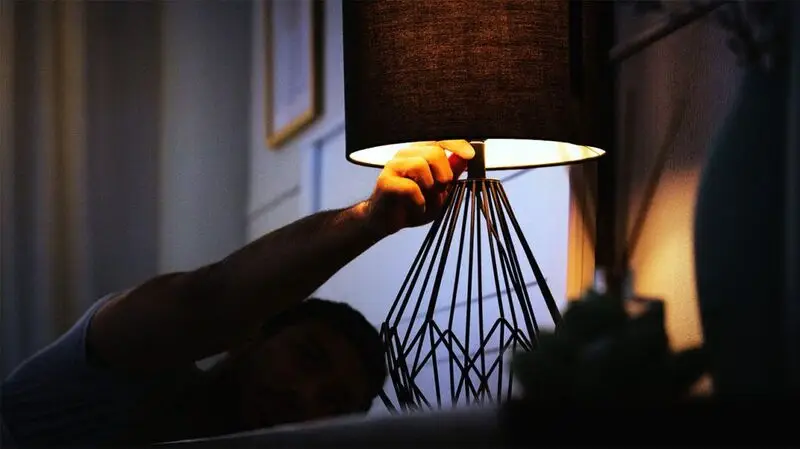
- Recently much research has focused on exposure to bright light at night and its potential negative impact on health.
- Numerous studies have found a possible link between exposure to nighttime light and diabetes risk.
- Researchers from Flinders University further confirm a possible correlation between bright light exposure at night and a higher risk of developing type 2 diabetes.
- Scientists believe that avoiding bright light at night may be a cheap and easy way to possibly delay or prevent the development of type 2 diabetes.
Over the last few years, research has shown that exposure to bright light at night has the potential to affect a person’s health negatively.
For example, numerous studies have examined the potential link between exposure to nighttime light and diabetes risk. A study published in November 2022 found that exposure to outdoor artificial light at night may increase a person’s risk of developing diabetes. Meanwhile, research published in March 2023 indicated that exposure to any type of light while sleeping can heighten a person’s risk for diabetes, obesity, and high blood pressure in those of older age.
Now, researchers from Flinders University in Australia further confirm a possible correlation between bright light exposure at night and a higher risk of developing type 2 diabetes.
In a study recently published in the journal
For this study, researchers analyzed medical data from almost 85,000 people throughout the U.K. Biobank who did not already have a type 2 diabetes diagnosis. Study participants each wore a light sensor on their dominant wrist for one week that recorded their light exposure both during the day and at night.
“Light is an easily modifiable environmental factor, which has underappreciated effects on human health,” Andrew Phillips, PhD, associate professor in the College of Medicine and Public Health at Flinders University in Australia and senior author of this study told Medical News Today.
“People who perform
shift work for many years are at greatly increased risk of type 2 diabetes. One of the possible reasons for this is disruption of the body’s circadian rhythms by mistimed environmental signals.”
— Andrew Phillips, PhD
“Circadian rhythms regulate all areas of our physiology, including our metabolism. Light is the most important time cue for the body’s central circadian clock, which coordinates rhythms across all tissues of the body. We also know from laboratory studies that disrupting circadian rhythms by exposure to light at night can cause metabolic dysfunction. We therefore expected that night light exposure might be related to type 2 diabetes in the population,” Phillips explained.
The study participants were followed for about nine years to see if they developed type 2 diabetes or not.
At the study’s conclusion, Phillips and his team found that participants with more light exposure at night — between 12:30 am and 6:00 am — had an increased risk of developing type 2 diabetes, and this was true regardless of how much light they experienced during the day.
“We were not surprised to see a link with night light exposure, but we did find the strength of the effect quite remarkable. I note that we were able to take into consideration many possible confounders that could explain this relationship. Even after doing this, the relationship of light exposure with type 2 diabetes remained robust,” Phillips said.
“Decreasing light exposure at night is a simple and cost-effective way to improve health and potentially to reduce your risk of type 2 diabetes. We are continuing to investigate how light exposure influences human health, across a broad range of outcomes. We are also studying whether improvements to lighting environments can lead to long-term improvements in health.”
— Andrew Phillips, PhD
After reviewing this study, Jennifer Cheng, DO, section chief of Endocrinology for Hackensack Meridian Jersey Shore University Medical Center in New Jersey, told MNT that this is an interesting study that highlights that people can take preventive measures to prevent or delay the development of type 2 diabetes.
“This study highlights the importance of getting a good night’s sleep in improving sugar control,” Cheng said.
She explained that turning off electronics at night is one simple cost-effective step people can take to potentially reduce their risk of developing type 2 diabetes.
Cheng said that reducing light exposure at night may help delay or even prevent the onset of type 2 diabetes. She reminded readers that delaying the progression of type 2 diabetes is still multifactorial and involves a good diet,
MNT also spoke with David I. Geffen, OD, FAAO, director of optometric and refractive services at the Gordon Schanzlin New Vision in La Jolla, CA, about this study.
“This study shows us another reason to talk to our patients about light exposure in the evening, especially before bedtime. We know that type 2 diabetes is exploding in this country, and any way we can slow down this progress will benefit the individual as well as society [as a] whole. We are familiar with the devastating side effects on the eye with diabetes and work hard to help our patients maintain their vision,” Geffen said.
“We are aware that our sleep patterns can be affected by light exposure. When we throw off our circadian rhythm, our bodies may respond in various ways including fatigue,
headaches , anddigestive issues . It now seems that patients who are susceptible to diabetes are even more likely to develop type 2 with modifications of the body’s circadian rhythm. Light exposure before sleep-time has been shown to have many adverse effects on the health of people.”
— David I. Geffen, OD, FAAO
Geffen stressed that reducing nighttime lights is important for everyone’s well-being. He also said that further research is needed to confirm the findings and explore the mechanism behind this link.





